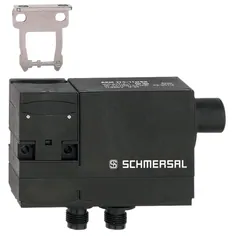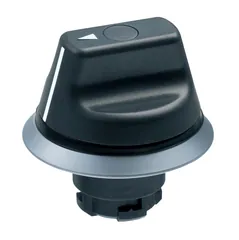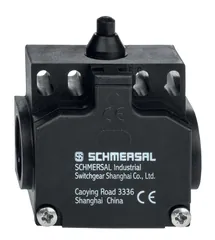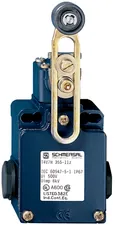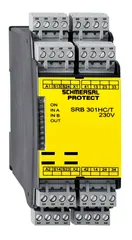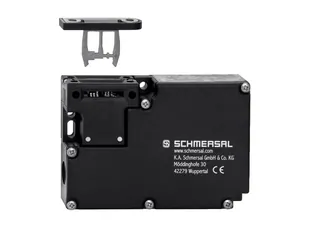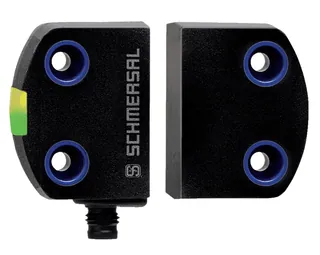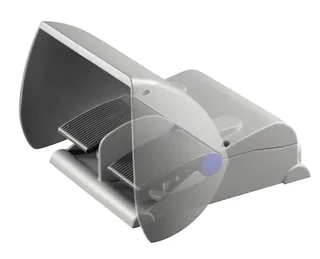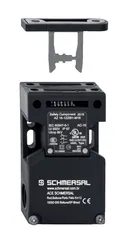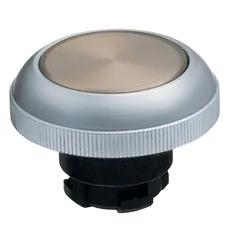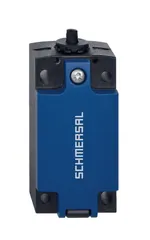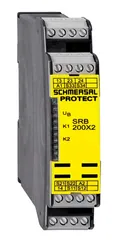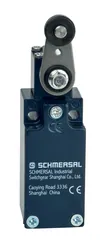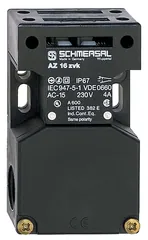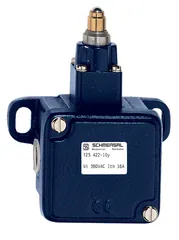Schmersal
101131929
1 / 4
- Part Number
- 101131929
- ETIM
- Group Code : EG000019
- Group Description : Relays
- Class Description : Device for monitoring of safety-related circuits
- Class Code : EC001449
- Version : 7
1200,00 zł
net1
Metody płatności:
- Najlepsza oferta od:
Zaufany dostawca Automa.Net
- Dostępność:
- 1 szt.W magazynieZaktualizowano: 02-11-2024
- Gwarancja:
- 6 miesięcy
- Szacowany czas dostawy:
- Na zapytanie
- Stan produktu:
- Nowy, Rynek wtórny
Nowy, Rynek wtórny - Nowy, nieużywany, nieuszkodzony przedmiot bez gwarancji producenta. Przedmiot może być dostarczony bez oryginalnego opakowania lub w zastępczym opakowaniu. Jeśli dostarczono, pudełko mogło zostać otwarte.
Bezpieczny proces płatności
Zasady zwrotów i reklamacji
Zasady wysyłki
Gwarancja
Electrical data - Relay outputs (auxiliary contacts)
- Switching capacity, maximum
- 24 VDC
- Switching capacity, maximum
- 2 A
Electrical data
- Frequency range
- 50 Hz | 60 Hz
- Operating voltage
- 24 VAC -15 % / +10 %
- Ripple voltage
- 10 %
- Thermal test current
- 4 A
- Rated operating voltage
- 24 VAC
- Rated AC voltage for controls, 50 Hz, minimum
- 20.4 VAC
- Rated control voltage at AC 50 Hz, maximum
- 26.4 VAC
- Rated AC voltage for controls, 60 Hz, minimum
- 20.4 VAC
- Rated control voltage at AC 60 Hz, maximum
- 26.4 VAC
- Rated AC voltage for controls at DC minimum
- 20.4 VDC
- Rated control voltage at DC, maximum
- 28.8 VDC
- Electrical power consumption
- 5 W
- Contact resistance, maximum
- 0.1 Ω
- Note (Contact resistance)
- in new state
- Drop-out delay in case of power failure, typically
- 80 ms
- Drop-out delay in case of emergency, typically
- 20 ms
- Pull-in delay at automatic start, maximum, typically
- 100 ms
- Pull-in delay at RESET, typically
- 20 ms
- Material of the contacts, electrical
- Ag-Ni, Au
Note
- Note (General)
- Inductive loads (e.g. contactors, relays, etc.) are to be suppressed by means of a suitable circuit.
Mechanical data - Dimensions
- Width
- 22.5 mm
- Height
- 75 mm
- Depth
- 110 mm
Ambient conditions - Insulation values
- Rated impulse withstand voltage U
- 4 kV
- Overvoltage category
- III
- Degree of pollution
- 2
Electrical data - Digital Output
- Voltage, Utilisation category DC-12
- 24 VDC
- Current, Utilisation category DC-12
- 0.1 A
General data - Features
- Stop-Category
- 0
- Wire breakage detection
- Yes
- Cross-circuit detection
- Yes
- Feedback circuit
- Yes
- Automatic reset function
- Yes
- Reset after disconnection of supply voltage
- Yes
- Earth connection detection
- Yes
- Integral system diagnostics, status
- Yes
- Number of inputs for NC
- 3
- Number of inputs for NO
- 3
- Number of LEDs
- 1
- Number of normally closed (NC)
- 3
- Number of normally open (NO)
- 3
- Number of safety contacts
- 1
General data
- Standards
- BG-GS-ET-14 | BG-GS-ET-20 | EN IEC 62061 | EN ISO 13849-1 | EN IEC 60947-5-1 | EN IEC 60947-5-3 | EN IEC 60947-5-5 | EN IEC 60204-1 | EN IEC 60947-1
- Climatic stress
- BG-GS-ET-14 | IEC 60947-5-3
- Enclosure material
- Glass-fibre, reinforced thermoplastic
- Gross weight
- 150 g
Safety classification
- Standards
- EN ISO 13849-1 | EN IEC 61508
- Performance Level, up to
- d
- Category
- 3
- PFH value
- 1.00 x 10⁻⁷ /h
- Notice
- for max. 50,000 switching cycles/year and max. 80% contact load
- Safety Integrity Level (SIL), suitable for applications in
- 2
- Mission time
- 20 Year(s)
Wiring example
- Note (Wiring diagram)
- The wiring diagram is shown with guard doors closed and in de-energised condition. | The ISD tables (Intergral System Diagnostics) for analysis of the fault indications and their causes are shown in the appendix. | Expansion of enable delay time: The enable delay time can be increased from 0.1 s to 1 s by changing the position of a jumper link connection under the cover of the unit. | To secure 3 guard doors up to PL d and Category 3 | Monitoring 3 guard door(s), each with a magnetic safety sensor of the BNS range | The feedback circuit monitors the position of the contactors K3 and K4. | Start push button: A start push button (NO) can optionally be connected into the feedback circuit. With the guard door closed, the enabling paths are then not closed until the start push button has been operated. | If neither start button nor feedback circuit are connected, a jumper connection must be mounted between X1 and S13. | If only one external relay or contactor is used to switch the load, the system can be classified in Control Category 3 to ISO 13849-1, if exclusion of the fault “Failure of the external contactor” can be substantiated and is documented, e.g. by using a reliable down-rated contactor. A second contactor leads to an increase in the level of security by redundant switching to switch the load off.
Other data
- Note (applications)
- Safety sensor | Guard system
Ambient conditions
- Degree of protection of the enclosure
- IP40
- Degree of protection of the mounting space
- IP54
- Degree of protection of clips or terminals
- IP20
- Ambient temperature
- +0 ... +55 °C
- Storage and transport temperature, minimum
- -25 °C
- Storage and transport temperature, maximum
- +70 °C
- Resistance to vibrations
- 10...55 Hz, Amplitude 0.35 mm, ± 15 %
- Restistance to shock
- 30 g / 11 ms
Mechanical data - Connection technique
- Termination
- rigid or flexible | Screw terminals M20 x 1.5
- Terminal designations
- IEC/EN 60947-1
- Cable section, maximum
- 2.5 mm²
- Tightening torque of Clips
- 0.6 Nm
Electrical data - Safe relay outputs
- Voltage, Utilisation category AC-15
- 230 VAC
- Current, Utilisation category AC-15
- 6 A
- Voltage, Utilisation category DC-13
- 24 VDC
- Current, Utilisation category DC-13
- 6 A
- Switching capacity, minimum
- 10 VDC
- Switching capacity, minimum
- 10 mA
- Switching capacity, maximum
- 250 VAC
- Switching capacity, maximum
- 8 A
Mechanical data
- Mechanical life, minimum
- 50,000,000 Operations
- Mounting
- Snaps onto standard DIN rail to EN 60715
Specifications
- Width
- 22.5 mm
- Height
- 75 mm
- Depth
- 110 mm
Approvals - Standards
- Certificates
- cULus
Electrical data - Electromagnetic compatibility (EMC)
- EMC rating
- EMC-Directive
Electrical data - Digital inputs
- Input signal, HIGH Signal "1"
- 12 … 30 VDC
- Input signal, LOW Signal "0"
- 0 … 2 VDC
- Conduction resistance, maximum
- 40 Ω
Integral system diagnosis (ISD)
- Note (ISD -Faults)
- The following faults are registered by the safety monitoring modules and indicated by ISD.
- Faults
- Failure of the safety relay to pull-in or drop-out | Failure of door contacts to open or close | Cross-wire or short-circuit monitoring of the switch connections | Interruption of the switch connections | Fault on the input circuits or the relay control circuits of the safety monitoring module
